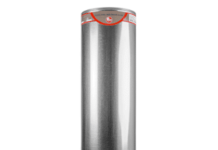Ever wonder why some websites in the vast digital universe manage to score well in search engine results while yours remain invisible? It’s because they score well in domain ranking, which determines a website’s relative position in search engine results.
So, your domain rank keeps declining, and you don’t know how to turn that around. In such a case, specialized processes like domain washing become essential in order to regain trust and rank with Google, the search engine giant. Discover some of the key tactics necessary to boost a domain’s ranking.
Audit your website
One of the key steps to raising a domain’s ranking is to perform a website audit. It assists in pinpointing problem areas and enhancing the functionality of your website. It involves looking for any technical difficulties, such as poor loading times, broken links, or issues with mobile responsiveness. It’s also essential to analyze the organization and layout of your website to make sure that users and search engines can navigate it easily.
Furthermore, it involves evaluating your on-page components, including headers, meta tags, and URLs, to make sure they are properly optimized with pertinent keywords. By inspecting your website on a regular basis, you can stay informed about any problems and make the required changes to improve your domain’s position.
Optimize page speed and performance
Search engines now heavily consider page and site speed when determining how highly to rank your pages. This is because Google doesn’t want to present users with results that load slowly and annoy them. Their goal is to display the websites that are most appropriate and relevant alongside their results.
Here are some tricks to optimize website speed and performance:
- Obtain a competent host.
- Test the speed of your website frequently.
- Cut down on file and image sizes.
- Change picture formats to WebP
- Employ a network for content delivery (CDN)
- Reduce complexity in redirects
- Remove unnecessary scripts, stylesheets, and plugins
- Apply caching techniques.
These practices can improve user experience and raise your domain’s chances of appearing higher in search engine results pages (SERPs). This will eventually raise your domain ranking.
Enhance On-Page Components
Improving a domain’s ranking requires optimizing its on-page components. You can raise your click-through rate and boost search engine exposure by creating captivating and well-optimized title tags and meta descriptions. A clear call-to-action and the inclusion of descriptive keywords, for example, can increase user attraction and boost the chance for your page to rank higher.
Header tags are also crucial for raising your domain’s ranking because they give your website’s content structure and hierarchy. Make sure your header tags contain pertinent keywords to aid search engines in determining the primary subjects of your material.
Additionally, a domain’s URL structure is crucial for it to rank well. It must be clear, simple, and easy to comprehend. Add pertinent keywords to the URL for increased visibility.
Obtain superior backlinks
Increasing the number of high-quality backlinks to a domain is important for ranking optimization. Backlinks from reliable and pertinent websites inform search engines that your domain is authoritative and trustworthy.
Try to obtain backlinks from high-authority websites in your industry through strategies like guest posting, producing high-quality material, and contacting influential people in your field.
Final words
Implementing the above-discussed practices on your website can be daunting, which is where experts come in.










































